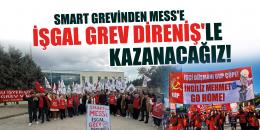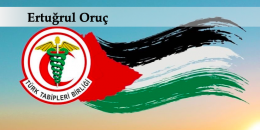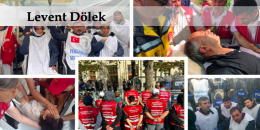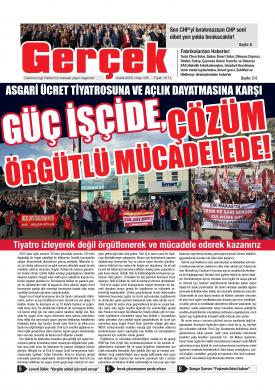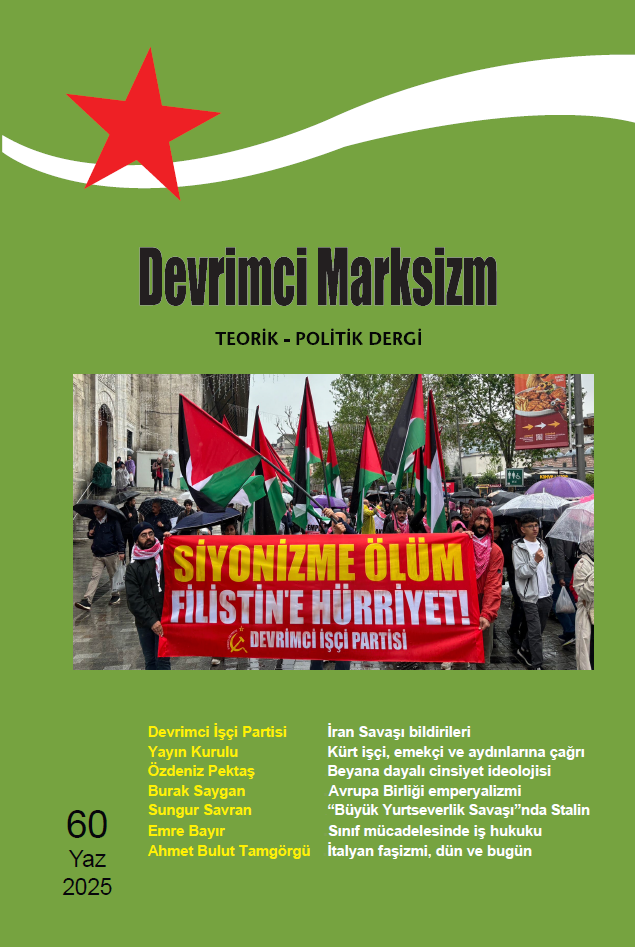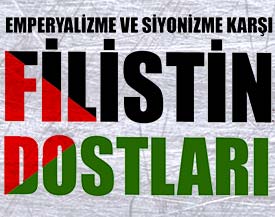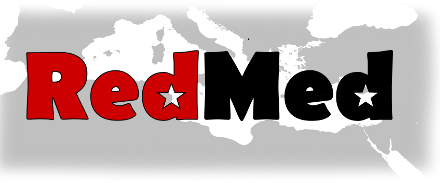Spectre of revolution looming over Tunisia
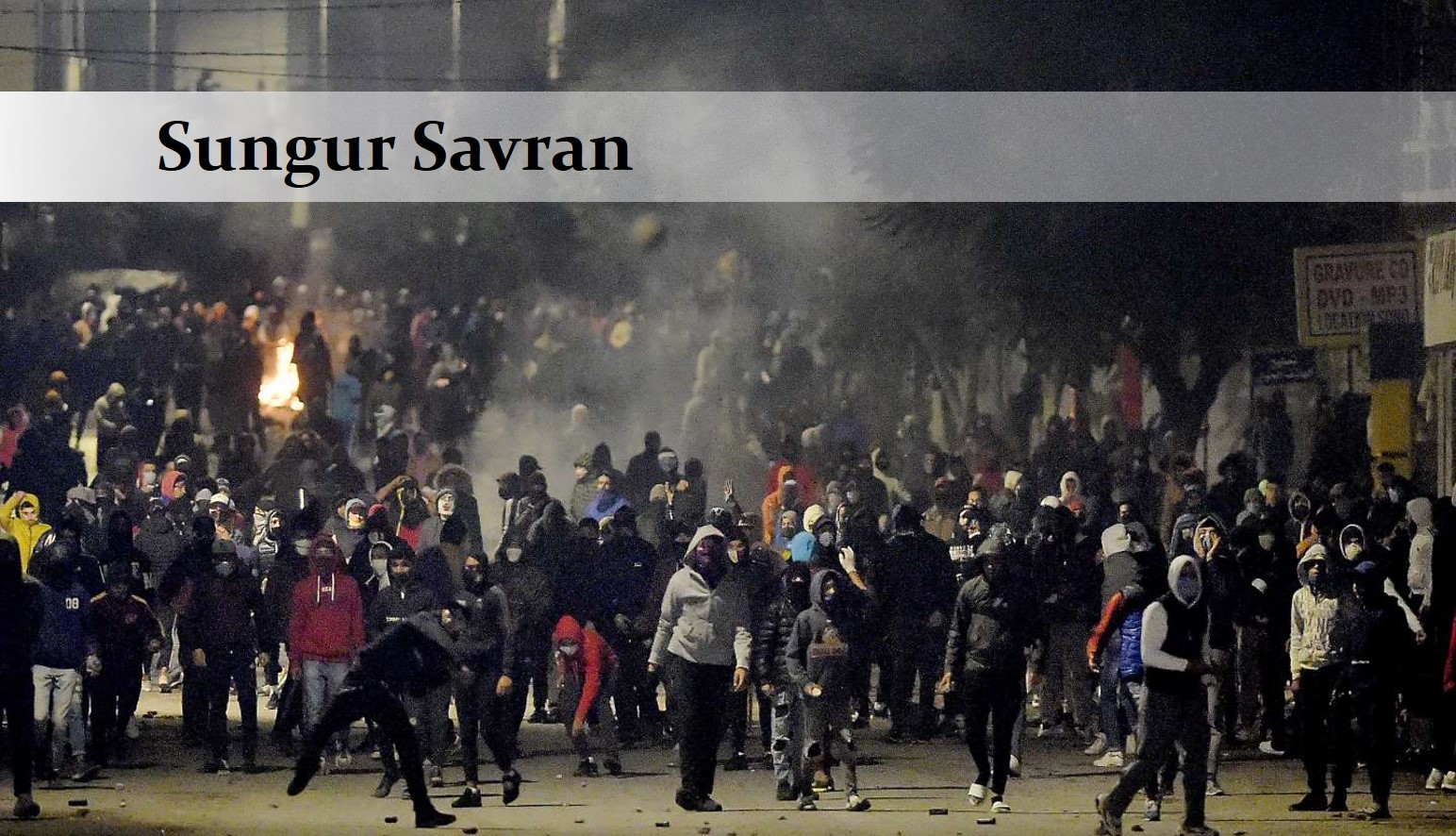
The first wave of the Arab revolution that raged through the Middle East and North Africa between 2011 and 2013 has many symbolic dates. But perhaps the outstanding one is the 25th January, when, in the wake of the victory of the Tunisian revolution ten days before, the Egyptian masses gathered all their courage and erupted in a revolutionary uprising. Today is the 10th anniversary of that eruption, which has left an indelible mark on the entire world, with its paradigmatic venue Tahrir Square, filled for months by hundreds of thousands of people marching towards deepening the revolution, until that fateful day in July 2013, when the Bonapartist chief of staff of the Egyptian military, Abdel Fattah al Sisi took power and put an end to the revolutionary process.
But the Arab revolution is still kicking. Four new countries, Sudan, Algeria, Iraq and Lebanon, erupted in revolutionary fervour in the course of 2019, only to be put to what we hope is a temporary lull by the Covid-19 pandemic. And this year on 14th January, the 10th anniversary of the victory of the Tunisian revolution, a new mass movement of the poor and destitute youth of Tunisia greeted this tenth anniversary. The article below was first published in Turkish on the web site www.gercekgazetesi.net,the central organ of the DIP (Revolutionary Workers Party) and is now being published here thanks to the translation made by a comrade. The text has been adapted for easier comprehension by a foreign audience, some idiosyncratic references to Turkey’s politics having been omitted. And commentary on a new important development since the publication of the Turkish version has been integrated into the article.
Tunisia is burning once again. In peripheral cities like Siliana, Kasserine, Sfax, Sousse, Bizerte, Gafsa, Monastir, as well as in the poor suburbs of the capital city of Tunis such as Ariana, youth and even children between the ages of 12 and 18 are challenging the curfew of the government and filling streets; responding to the tear gas, water cannons, batons and the tanks of the police forces with stones, Molotov cocktails and by burning rubber tyres and trash cans, looting supermarkets, storming government offices, and, in the true sense of the phrase, spilling out their hatred. Bourgeois Tunisia is perplexed and cornered, watching the events unfold. They all know very well the reasons behind the events: 30% unemployment, poverty, immense income inequality; the effects of the Coronavirus adding to the destructive results of the Third Great Depression ending up in an economy that shrank by 9% in 2020, a completely empty treasury, a finance structure wallowing in debt and the inexorable fall of the Tunisian dinar. And a collection of political parties that helplessly watch all these while being knee-deep in corruption on the one hand and mere tools of international powers on the other.
The Arab revolution that has been tearing apart the region since 2011 started in Tunisia. The struggles of the wretched that started in mid-December 2011 when the street hawker Mohamed Bouazizi set himself on fire to protest the cruelty of the municipal police had an almost identical character. The relation is likely straightforward: those who sparked the fires of revolution were probably the elder brothers of the youth who now set the working-class neighbourhoods on fire! That movement was quick to jump to the coastal cities such as the capital Tunis that were relatively better off than the rest of the country due to the tourism income, with the only big trade union of the country, UGTT, acting as a transfer hub, and gained a political victory as it toppled the 23-year dictatorship of Zine el Abidine ben Ali, forcing him to escape from the country. The Tunisian revolution was to set off a whole wave of revolutions in the Arab world. But even though it fared better in terms of democracy than other revolutions, it was not only completely unable to solve the essential economic/class problems but instead made them even worse, leading the country to revolt today.
In spite of those who ignore the Arab revolution, those who think it is of “imperialist design”, the poor and the youth of Tunisia were to shake the country with demonstrations on almost every anniversary of 14 January. But in its 10th anniversary, the wretched of the earth are to cause a much bigger quake. The eyes that, for this or that reason, do not even want to behold the sight of this revolt of the youth, those that look the other way whenever they take to the streets, their scope limited to petty-bourgeois youth and “enlightenment revolution”, belong to those that are unable to comprehend that revolutions are results of complicated dynamics in all history, those who yield to the parliamentary cretinism or to irrational conspiracy theories, those designer socialists.
They will consider this new revolt as a “design of political Islam” since the situation is extremely complicated, just like in any revolution or people’s revolt. Because as a result of the contradictions that cut through the whole of the Middle East and Northern Africa, Tunisia has also become the playground of international powers.
Accursed proximity: the effects of Libya on Tunisia
Today Tunisia stands as the country that is affected the worst in its internal politics by that accursed outcome of the Arab revolution: the Libyan civil war. Let certain others call the Libyan civil war that broke out in 2011, toppling and killing Muamar el Gaddafi, as a “revolution”, the Revolutionary Workers Party (DIP) saw the turmoil as “a dagger into the heart of the Arab revolution”. As one might recall, merely ten days after the victory of the Tunisian revolution on 14 January 2011, the Egyptian revolution broke out on 25 January. This revolution would achieve its first victory by toppling Hosni Mubarak. Just one week after this, on 17 February, the revolt against Gaddafi started in Libya. This was widely acclaimed as the continuation of the Arab revolution. DIP described this as an inter-regional, tribal civil war. A single glance at the Northern Africa map will tell why this civil war turned into “a dagger into the heart of Arab revolution”. Libya is right in the middle of the two countries (Tunisia and Egypt) with victorious political revolutions! While certain actors crown their anti-Arab stances with “imperialist design” theories, imperialists did not miss this unique opportunity. They jumped right in to support the tribal revolts and topple Gaddafi with the warplanes of imperialist powers led by French-Italian cooperation and the ground troops of reactionary tribes, attempting to turn Libya into a fortress standing against neighbouring Tunisian and Egyptian revolutions possibly advancing in the direction of socialism.
Libya has not recovered since then. The civil war endured with an ever-changing form. Erdoğan’s Turkey, with the implicit support of a certain wing of imperialism (Britain, Italy, and the US), supports the Muslim Brotherhood affiliated Fayez al-Sarraj government while Russia and France, as well as the trio Egypt, Saudi Arabia, and the United Arab Emirates, on the other hand, support forces led by General Khalifa Haftar. It is this war that poisons the political atmosphere of the western neighbour of Libya, Tunisia.
Tunisia long had a close economic relationship with Libya. The immense oil wealth of its eastern neighbour creates attractive economic avenues for Tunisian capitalists. Libya is the country with the largest trade volume with Tunisia and its most important export market. Those Libyan upper classes who got rich from oil have intense tourism and other similar relationships with Tunisia. The World Bank calculates that a quarter of Tunisia’s growth during 2011-2015 is attributable to economic relations with Libya. Furthermore, Tunisia hosts all talks for ceasefire and mediation in the Libyan civil war. Of course, under US coordination...
It is not only the ruling classes of Tunisia that are intimately tied to Libya. When the revolution fails the unemployed and the hungry Tunisian youth find the solution in attempting to escape to Italy and France as migrant workers. Libya is a central hub of illegal migrant workers going into Europe through Italy. People from all over black Africa, from as far away as Sudan, come to Libya for this reason, but Tunisian youth ranks the first among the different nationalities.
Finally, organizations like Al-Qaeda and ISIS that are active in Northern Africa and the countries in the northern part of black Africa, from Somalia in the east to Mali in the west, use Tunisia as a gateway for their activities in Libya and also do devastating acts in the country. Of course, such organizations also see the migrant worker candidates who are frustrated by the difficulties of the escape to Europe as a pool to tap into. For all these reasons, the Tunisian government is in a close relationship with the US to secure the Libyan border.
Due to all of these geographical, military, economic reasons, one of the Libyan civil war’s political fronts is in Tunisia. The most important factor here is the Muslim Brotherhood affiliated Ennahda party. Ennahda got very strong after the Tunisian revolution and became the number one party in the country. But the fate of the Muslim Brotherhood in Egypt (with the mediation of Europe) led Ennahda to pull itself back step by step in a planned fashion. For a time, the country was led by the secular pro-imperialist Nidaa Tounes (Voice of Tunisia) party. Ennahda could not take power even after the death of El-Beji Caid es-Sibsi, the reliable aging servant of the Tunisian ruling classes and the leader of Nidaa Tounes. After his death, the independent president-elect of the 2019 elections, Kais Saied, kept his distance from Ennahda, despite himself being a “conservative”.
Today there is a fierce struggle between the coalition formed around Kais Saied and the coalition around Ennahda named the “Karama (Dignity) coalition”. The historic leader of Ennahda, Rached Ghannouchi, is the leader of the parliament. While being the country’s biggest party, Ennahda only has 59 of the parliament’s 219 seats. The political life in the country is fractured beyond belief, with over 220 political organizations!
It seems the biggest conflict between Kais Saied and Rached Ghannouchi is on foreign policy, on the issue of Libya. Today Ghannouchi openly supports the Sarraj government while the Tunisian government reacts fiercely to this attitude. A small secular party, Free Destourian Party, has declared war on the parliament leader Ghannouchi, which seems to be gaining traction.
The government and the secular wing continues the struggle against Ghannouchi and Ennahda, while Ennahda is trying to undermine the government. This is why a part of the bourgeoisie presents the revolts in Tunisia as Ennahda provocations. Claims of trucks carrying tires to the revolting youth abound, and in short, the whole movement is presented as an “Ennahda design”.
Ennahda’s new turn: the project of paramilitary troops
This section of the Tunisian bourgeoisie is obviously the traditional wing with deep ties to French imperialism. Its views are daily advanced in French-language newspapers such as La Presse, L’Economiste maghrébin and the like. Apart from the revolutionary potential of the poor and destitute youth of what are called the “neighborhoods of exile” in Tunisian political jargon, Ennahda is still a nightmare for this wing of the bourgeoisie. The Tunisian situation involves a contradiction solved, temporarily at least, by the savage methods of al Sisi in Egypt, but put in the deep freezer in Tunisia: the contradiction between the French and EU-oriented wing of the bourgeoisie and the international Muslim Brotherhood movement.
So when some spokespeople for Ennahda, Abdelkrim Harouni, the president of the so-called “Choura” (Council) of Ennahda, and Mohammed Goumani, a deputy in the parliament, came forward, separately, with the idea that what they called the “troublemakers” of the poor neighborhoods could be successfully put down if the Ennahda “youth” worked together with law enforcement, the pro-European wing of the bourgeoisie was scandalised and scared. This turn in the tactics of Ennahda certainly brings in the immediate danger of an unruly force on the streets, accountable to no one but the Islamists of Ennahda.
We cannot judge from afar whether Ennahda, with its limited political clout, will be able to materialise this project. But there’s no doubt that if it comes through it will signify an extremely grave development in Tunisian and regional politics. Moreover, it should not escape anyone’s attention that this comes only a fortnight after the abortive invasion of the US Capitol by the pro-Trump thugs of MAGA. This is a second instance of politics being turned from the corridors of parliamentary structures (whether the US Congress or the Tunisian ARP) to street-fighting methods.
Tunisia is moving towards becoming Somalia. The 220 political organizations are only those that are legally represented. When they are not the cure, and when the socialists fool about in parliamentarist games, the “wretched of the earth” will try to find salvation in organizations of savagery. Somalia teeters between a fractured political system and Al-Shabaab. Tunisia might very well be on its way there.
One must fight against this possibility physically and politically. The anti-Ennahda camp leader, Prime Minister Hichem Mechichi, made a TV speech on the fourth day of the demonstrations, speaking to the young poor who are barely literate in a complicated language, in literary Arabic understandable only to the educated, a language that they cannot possibly understand. Recalling that Tunisia is an ex-colony of France, we may even say that the state of the suburban young poor is all French to this gentleman (note: “it is all French to me” is the version of “it is all Greek to me” in Turkish)!
Marxism must open up another way: it must flare up the fiery memories of Mohamed Bouazizi and Chokri Belaïd , who was assassinated as he refused to conform with bourgeois parliamentarism, must place the workers union confederate UGTT back into the center of revolution and mobilize the revolutionary potential of working-class youth for a second Tunisian revolution.


